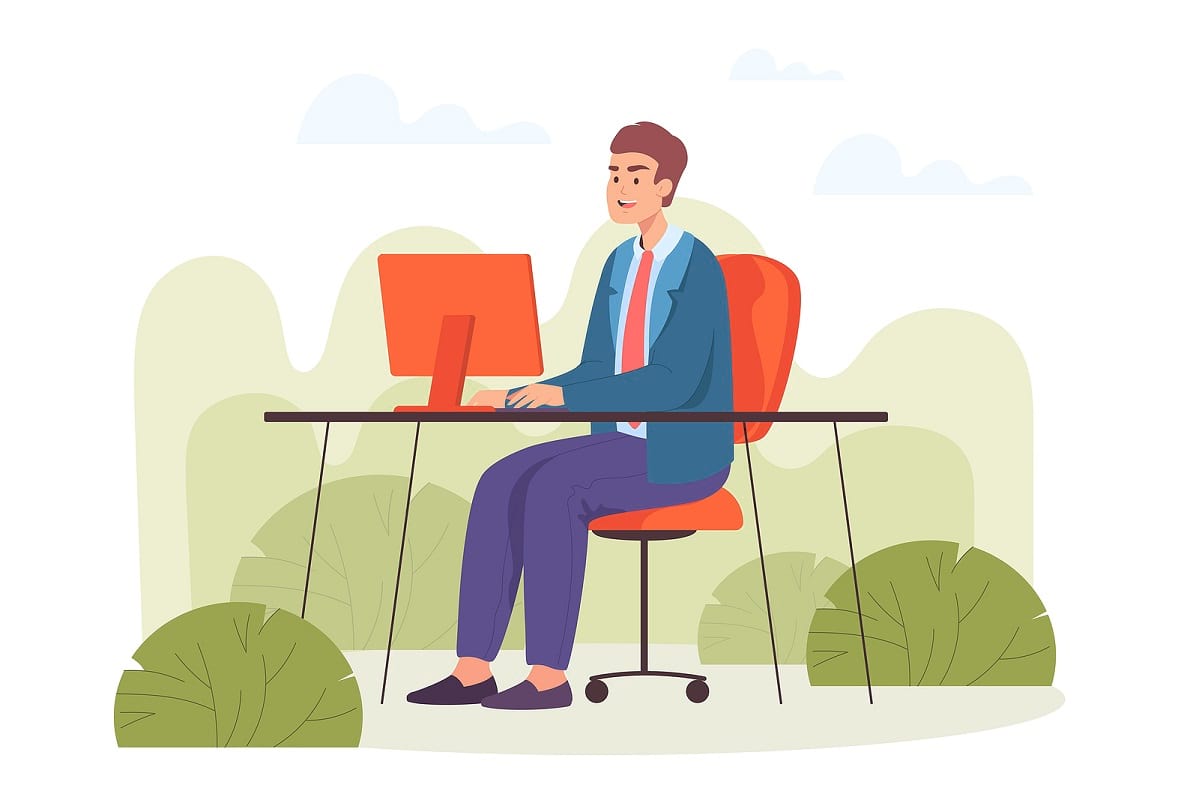How Outdoor Work Can Benefit the Lives of Your Employees

If your business is like most, your employees likely spend a lot of time indoors. The average American worker spends 90% of their time inside. During this time spent indoors, 86% of American workers sit all day long. Spending an extended amount of time indoors can cause adverse health effects, including a higher risk of diseases including colon, endometrial, and lung cancer.
To combat these adverse effects, many businesses are allowing employees to work from outside (WFO). WFO is a popular trend in which workers complete their daily work outdoors. By spending more time outside and less time sitting indoors, your workers can reap various mental and physical health benefits. Follow along to learn more about how WFO can benefit your business.
8 Benefits of Working From Outside
By swapping out cubicles for an outdoor setting, your employees may begin feeling better both mentally and physically. Here are eight health benefits workers can experience when WFO.
1. Reduced Blood Pressure
Studies show that those who spend at least thirty minutes outdoors per week are less likely to have high blood pressure. Even if your employees cannot spend all day working outside, a short break in nature is enough for them to start noticing some positive improvements in their health.
2. Increased Problem-solving Skills
If you ever notice your team feeling uninspired, urge them to go outside for a walk. Those who go on outdoor walks benefit from a 60% boost in creative problem-solving skills. To notice these benefits, encourage your employees to walk to their favorite outdoor work spot.
3. Improved Heart Health
If your staff sits at a desk all day, they are at an increased risk for heart disease. To keep their hearts healthy, allow them to take outdoor breaks and walks to help them stay active and reduce their risk for heart disease.
4. Better Vision
If your team is WFH or WFO, they will likely spend most of their time in front of a computer screen. While a computer may be beneficial to them effectively completing their work, it can be highly damaging to their eyes. Studies show that light emitted from computer screens can cause irreversible damage to your eyes. WFO allows natural sunlight to mitigate screen time, so your workers can protect their eyes from strain and permanent damage.
5. Elevated Energy Levels
When working indoors, your team may reach for another cup of coffee to help get through the day. Similar to the energizing effects of coffee, WFO can also increase their liveliness. Just twenty minutes outside is enough to significantly boost energy levels without the crash or jitters caused by caffeine.
6. Less Stress
Compared to those sitting in urban environments, those who sit outside in nature experience a 12.4% reduction in cortisol levels. Widely known as the stress hormone, high cortisol levels can result from stress and stressful thinking patterns.
7. Access to Cleaner Air
Compared to outdoor air, indoor air has two to five more pollutants. By breathing air trapped inside all day, your workers will drastically increase their exposure to dust mites, allergens, and particulate matter. By WFO, your team can spend their time breathing in cleaner air less likely to contain pollutants.
8. Increased Happiness Levels
You are actively increasing their happiness levels by allowing your employees to take their routine work outside. Studies show that just 30 minutes of outdoor exposure per week can decrease depression by 7%. In addition, with proximity to nature and green space, your workers can reap cognitive benefits they couldn’t find in an office building.
4 Tips For Creating An Effective Work-From-Home Space
While your business’s routine tasks might not primarily take place outside, you can still take steps to create an outdoor work environment so your team can reap all of the benefits that WFO can provide. You can also give suggestions to assist your WFH staff in setting up their own ideal WFO space. Learn how to create the ultimate outdoor office with several easy tips.
1. Find an Outdoor Desk or Table
Even though sitting down isn’t preferred for your health, investing in outdoor desks and tables can be an excellent way for your employees to enjoy the outdoors while being productive comfortably. Standing desks can help your workers minimize the harmful effects of sitting all day.
2. Protect Your Technology
If your business’s daily work requires computers, be sure to add some overhead protection to protect your employee’s devices from any sun damage or glare. To further protect their eyes, encourage your team to wear blue-light blocking glasses to reduce potential damage to their retinas.
3. Decorate Your Outdoor Space
Add fun decor like plants or an outdoor rug to make an outdoor workspace feel more comfortable. In addition to adding color to your company’s outdoor space, plant exposure can benefit your mental and physical health. By letting your team spend time in your business’s outdoor office, you can feel an improvement in their moods.
4. Boost Your WiFi
When WFO, your employees may experience difficulty maintaining a solid connection to your WiFi router. To combat this, consider installing a WiFi extender. A WiFi extender can help boost the range of a WiFi router, allowing workers to connect to the Internet in an outdoor space more effectively.
The Bottom Line
Even though your business’s daily work might not require your employees to be outside every day of the week, there are steps you can take to improve their lives by allowing them to WFO. Whether creating an outdoor office, encouraging outdoor breaks, or going on a walk with your team, spending time working outdoors is a great way to improve your team’s overall health and wellbeing.
Griffin Parrish is a Junior Content Marketing Specialist at Siege.
Get the top recruiting news and insights delivered to your inbox every week. Sign up for the Recruiter Today newsletter.
